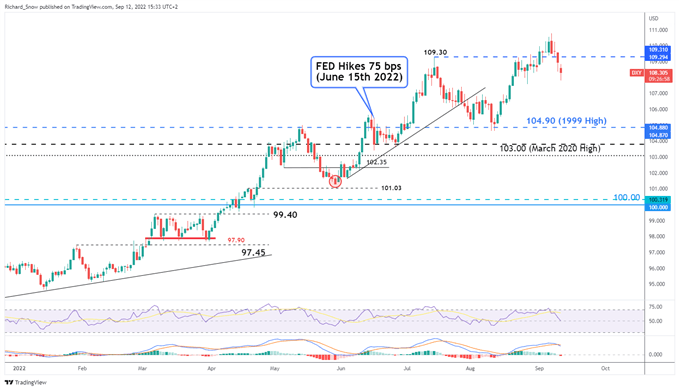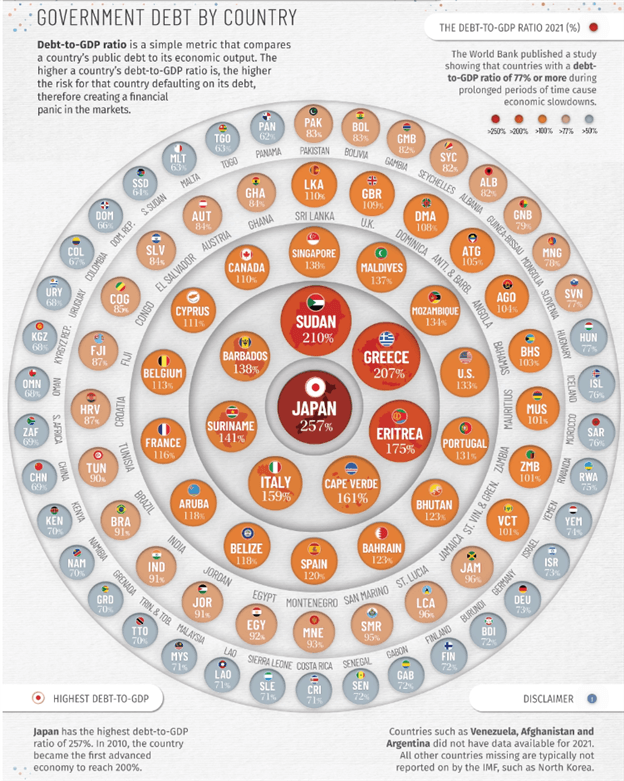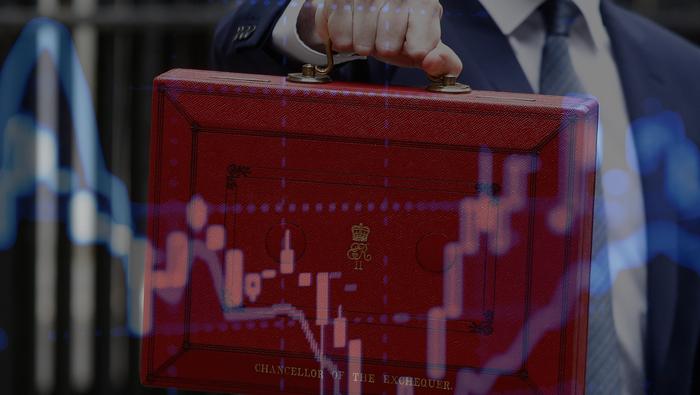A perfect storm of economic turmoil and aggressive interest rate hikes by the US Federal Reserve are driving global investors into the dollar, pushing up the US currency and depressing others. This is causing problems around the world, but it is hitting emerging market economies particularly hard.
US Dollar Index Daily Chart (DXY)

Source: tradingview
It’s only going to get worse. Top Fed policymakers are talking tough on interest rates and not pushing back when markets suggest they will forge ahead with another 75-basis-point hike when the Federal Open Market Committee meets September 20-21 following a big hike in July.
After signaling a hawkish pivot in his Jackson Hole speech in late August, Fed Chairman Jerome Powell doubled down on the central bank’s commitment to wring inflation out of the economy with remarks on September 8.
“We need to act now, forthrightly, strongly as we have been doing,” he said at a conference on monetary policy. “My colleagues and I are strongly committed to this project and will keep at it.”
Vice Chair Lael Brainard said the same a day earlier, telling a conference in New York, “We are in this for as long as it takes to get inflation down.”
The Fed’s aggressive stance has led the dollar to appreciate nearly 15% his year against other currencies. The European Central Bank was forced to raise its policy rate by 75 basis points at the September 8 meeting of its governing council to keep from slipping further behind the dollar after falling below parity in August.
Safe haven
Meanwhile, the war in Ukraine and its impact on European energy supply and prices have contributed to market volatility and encouraged investors to seek a safe haven in the US currency and liquid American markets.
Among other things, this increase in the dollar exchange rate is wreaking havoc with emerging markets as it makes servicing dollar denominated debt more expensive. Like the ECB, central banks in these countries have to try to keep pace with the Fed even if higher interest rates threaten growth and employment.
$38bn in outflows through July
The Institute of International Finance said recently that outflows of funds from foreign investors in emerging markets totaled $38 billion for the five months through July. Sri Lanka has defaulted on its debt, while Bangladesh and Pakistan are seeking billions of dollars in aid from the International Monetary Fund.

Source: Visual Capitalist
Bloomberg Economics has calculated that distressed debt in emerging markets has reached a quarter of a trillion dollars, heralding what it calls a cascade of potential defaults. El Salvador, Ghana, Egypt, and Tunisia, as well as Pakistan are increasingly vulnerable.
But the list doesn’t stop there. Kenya, Argentina, Bahrain, Namibia, Angola, and South Africa are also exposed, according to the Bloomberg ranking.
Oil exporters profit
Oil exporters in the Middle East and commodities exporters like Brazil profit from the stronger dollar as the US currency is generally used to set prices for these essentials. The reverse is true for countries that must import these raw materials.
Developing country debt has grown to nearly $100 trillion as of the end of March, and the debt ratio in emerging and developing countries reached 207% in 2020, compared to 119% in 2010 and 56% in 1970.
Many emerging market countries that benefited from investor interest in 2020 due to their higher yields boosted the share of debt denominated in foreign currency to a quarter of overall debt, compared to 15% in 2009.
Rising US interest rates have been blamed historically for the Latin American debt crisis in the 1980s, the Mexican peso crisis in the early 1990s and the Asian financial crisis in the late 1990s. A rising dollar increases costs for fuel and food even as it exacerbates the cost of debt servicing.
Developed countries are hardly immune from impact of a rising dollar and are often equally helpless in doing anything about it. But the effect is more on growth and employment than on escalating debt costs as they have liquid domestic markets for debt.
Read more in Debt to GDP Ratio by Country.
Trade Smarter - Sign up for the DailyFX Newsletter
Receive timely and compelling market commentary from the DailyFX team






